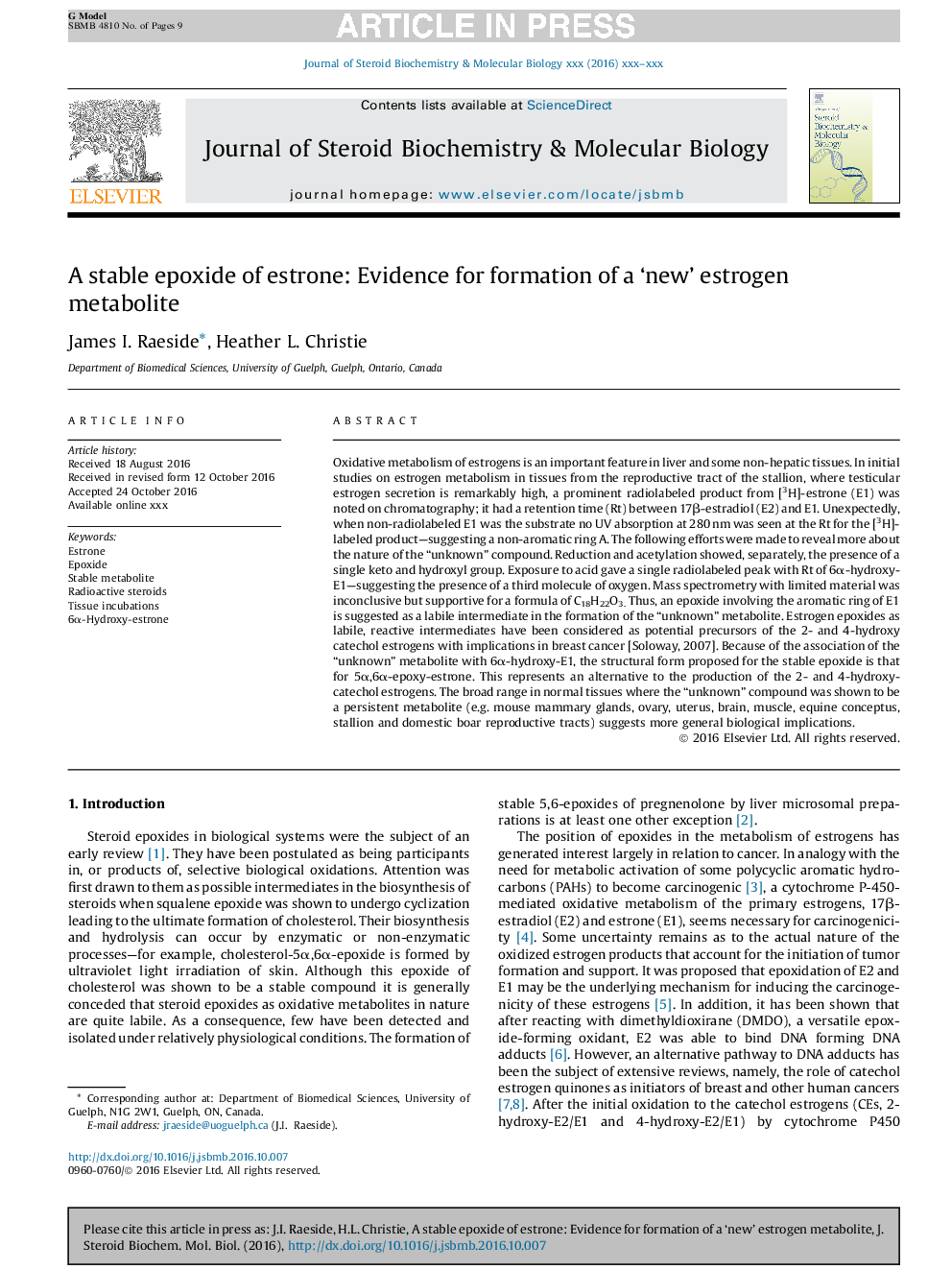| Article ID | Journal | Published Year | Pages | File Type |
|---|---|---|---|---|
| 5513106 | The Journal of Steroid Biochemistry and Molecular Biology | 2017 | 9 Pages |
Abstract
Oxidative metabolism of estrogens is an important feature in liver and some non-hepatic tissues. In initial studies on estrogen metabolism in tissues from the reproductive tract of the stallion, where testicular estrogen secretion is remarkably high, a prominent radiolabeled product from [3H]-estrone (E1) was noted on chromatography; it had a retention time (Rt) between 17β-estradiol (E2) and E1. Unexpectedly, when non-radiolabeled E1 was the substrate no UV absorption at 280 nm was seen at the Rt for the [3H]-labeled product-suggesting a non-aromatic ring A. The following efforts were made to reveal more about the nature of the “unknown” compound. Reduction and acetylation showed, separately, the presence of a single keto and hydroxyl group. Exposure to acid gave a single radiolabeled peak with Rt of 6α-hydroxy-E1-suggesting the presence of a third molecule of oxygen. Mass spectrometry with limited material was inconclusive but supportive for a formula of C18H22O3. Thus, an epoxide involving the aromatic ring of E1 is suggested as a labile intermediate in the formation of the “unknown” metabolite. Estrogen epoxides as labile, reactive intermediates have been considered as potential precursors of the 2- and 4-hydroxy catechol estrogens with implications in breast cancer [Soloway, 2007]. Because of the association of the “unknown” metabolite with 6α-hydroxy-E1, the structural form proposed for the stable epoxide is that for 5α,6α-epoxy-estrone. This represents an alternative to the production of the 2- and 4-hydroxy-catechol estrogens. The broad range in normal tissues where the “unknown” compound was shown to be a persistent metabolite (e.g. mouse mammary glands, ovary, uterus, brain, muscle, equine conceptus, stallion and domestic boar reproductive tracts) suggests more general biological implications.
Related Topics
Life Sciences
Biochemistry, Genetics and Molecular Biology
Biochemistry
Authors
James I. Raeside, Heather L. Christie,
